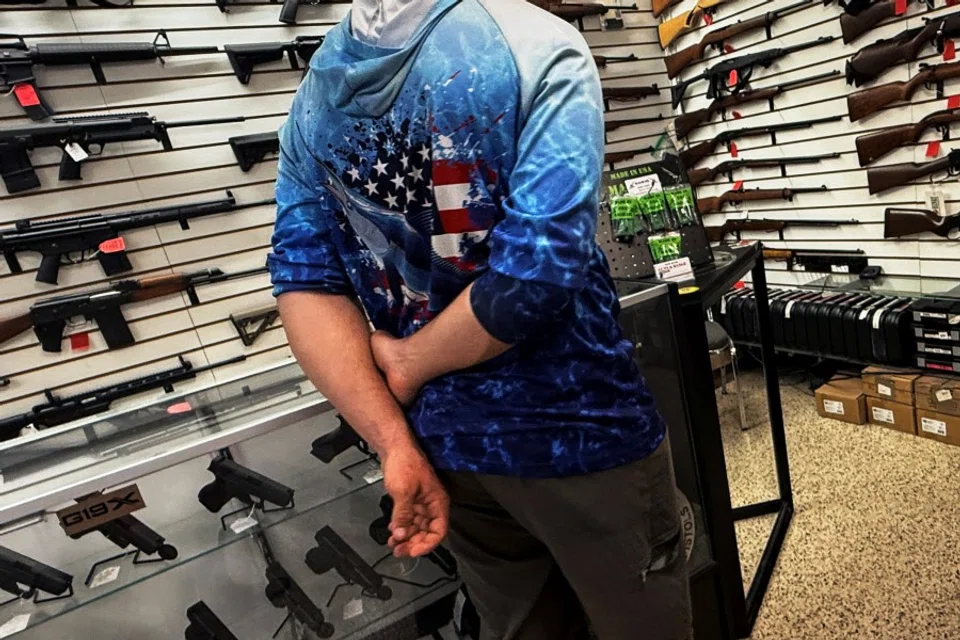After Charlie Kirk: Why gun control remains America’s unsolvable crisis
The recent shooting of American conservative opinion leader Charlie Kirk shows once again that proposed gun control bills die in Congress, and society lapses into another waiting period for the next tragedy. Why is gun control in America so hard to manage? Commentator Deng Yuwen ponders the question.

The shooting that killed Charlie Kirk — an American conservative opinion leader and regarded as the “youth commander” of the MAGA movement — during a speech at the University of Utah has once again ignited partisan conflict and ideological division in the US, while also pushing the gun control issue back into the national spotlight. The bloodshed, the innocent victims and the heated debate afterwards have become a grim ritual that repeats itself after nearly every mass shooting in America.
Although polls consistently show that a majority of Americans support stricter gun control measures, the outcome is often the same: once emotions fade, nothing changes. Proposed gun control bills die in Congress, and society lapses into another waiting period for the next tragedy. This raises the fundamental question: why is gun control in the US, a country plagued by gun violence, so difficult?
After Kirk’s death, many right-wing voices emphasised not mourning or stricter regulation but rather warning against any restriction of fundamental freedoms.
Enshrined in the constitution and law
To understand this, one must first revisit American history. The gun tradition is deeply rooted, inseparable from the country’s founding. In colonial times, militias relied on firearms to resist British rule, and the victory in the War of Independence turned guns into symbols of freedom. Later, westward settlers likewise depended on firearms for self-defence and hunting. Thus, a cultural belief emerged: guns were not just tools but the hallmark of a “free man”.
Early American thinkers and politicians widely believed that an armed citizenry was the ultimate safeguard against tyranny. Hence, the Second Amendment was enshrined in the Constitution: “... the right of the people to keep and bear Arms, shall not be infringed.”
This provision was not just a legal clause but, over time, crystallised into an ideology — regarded by many Americans as an inalienable natural right. After Kirk’s death, many right-wing voices emphasised not mourning or stricter regulation but rather warning against any restriction of fundamental freedoms. Indeed, Kirk himself had previously said that the unfortunate cost of some gun deaths every year was worth paying in order to preserve the Second Amendment and thereby protect “our other God-given rights”. He saw this as a prudent bargain — an expression of precisely this historical-cultural inertia.

Secondly, America’s gun control dilemma has been institutionalised in law. For a long time, the meaning of the Second Amendment was debated: did it protect the rights of state militias, or did it guarantee the individual right to own guns? It was not until the Supreme Court’s District of Columbia vs Heller (2008) ruling that the Court explicitly held that the Second Amendment protects an individual’s right to possess firearms.
Two years later, in McDonald vs Chicago, the Court confirmed that this right applied not just federally but also to the states. In other words, individual gun ownership became a constitutionally protected right. Any attempt to impose strict gun laws must pass constitutional scrutiny, raising the bar considerably.
...even if the public supports stricter gun laws and Congress passes them, such laws could still be struck down as unconstitutional.
Equally important, America is a common law country where the judicial system stresses the doctrine of precedent. Once the Supreme Court sets a ruling, it binds lower courts and future cases for years to come. This means that even if the public supports stricter gun laws and Congress passes them, such laws could still be struck down as unconstitutional.
After Kirk’s death, when Democratic lawmakers proposed restricting certain semi-automatic weapons, opponents immediately invoked Supreme Court precedent, arguing that such firearms are in “common use” and thus protected by the Second Amendment. The law itself thus stands as a near-insurmountable barrier to reform.
Insurmountable partisan divide
The third obstacle is political reality. The US is a classic two-party system, and gun control has become a dividing line between Democrats and Republicans. Backed largely by urban constituencies, Democrats generally advocate stricter background checks and restrictions on assault weapons and high-capacity magazines. Republicans, supported by rural and conservative states, staunchly defend gun rights.
The partisan divide is nearly irreconcilable, and a deeply polarised Congress makes passing any bipartisan gun control legislation extraordinarily difficult. Even when “bipartisan” bills do emerge — such as the Bipartisan Safer Communities Act signed by President Biden in 2022 — they typically amount to marginal adjustments, like expanding background checks for young buyers or funding mental health services, falling far short of tackling the gun market’s core issues.
The Kirk shooting took place in a state with lax gun laws, where the government, rather than tightening restrictions, argued that “more good guys with guns” were the solution.
Federalism further entrenches division. States have the power to enact their own gun laws, producing a patchwork of stark differences across the map. Blue states like New York and California impose strict regulations, while red states such as Texas and Florida allow open carry and, in some cases, even eliminate permit requirements altogether.
The Kirk shooting took place in a state with lax gun laws, where the government, rather than tightening restrictions, argued that “more good guys with guns” were the solution. Gun control, therefore, is not only a federal-versus-state conflict but also a clash of state identities across the country.

A fourth dimension is the entrenched structure of interests. America’s gun industry is a vast economic sector, spanning manufacturing, sales and associated services, worth billions of dollars and employing millions. Interest groups like the National Rifle Association (NRA) have long shaped policy through lobbying, political donations and media campaigns.
In American politics, winning elections requires both money and votes — and the NRA provides both. Many politicians fear that supporting gun control would mean losing NRA backing and alienating core constituencies. Following high-profile shootings, the NRA has often emphasised that “guns are not the problem, people are”, and called for more investment in mental health instead of restricting firearms. The power of such lobbying keeps gun legislation locked in permanent defence.
The interest structure also extends to broader social identity. More than 400 million firearms circulate in civilian hands in the US — over one gun per person. This enormous stockpile makes any attempt at banning sales or retrieving existing weapons virtually impossible.
Moreover, deep-seated suspicion of the government ensures that proposals for large-scale buybacks provoke fierce backlash. In 2019, Democratic presidential candidate Beto O’Rourke’s slogan of “mandatory buyback” for assault weapons was lampooned by opponents as “the government coming to knock on your door and take your guns,” leading to a political debacle. At both the practical and psychological levels, gun control remains an uphill battle.
In the aftermath of Kirk’s death, some right-wing media even portrayed calls for gun control as “an elite attempt to strip ordinary Americans of their rights”.
Gun policy in the bullseye of cultural war
Returning to the Kirk shooting, what it reveals is not just an individual’s act of violence but the deeper structural and cultural deadlock. After every tragedy, the public cries “never again,” yet institutional frameworks, constitutional barriers, political polarisation and entrenched interests render gun control nearly impossible. Democrats accuse Republicans of “valuing NRA checks more than children’s lives,” while Republicans retort that Democrats are “exploiting tragedy for political gain.” Amid this mutual recrimination, no fundamental solution emerges.
Worse still, the gun issue reinforces America’s social fractures. Gun ownership has become a core part of identity politics: for many conservatives, firearms are not only a legal right but also a symbol of resistance against “elites, liberals, and the federal government”. In the aftermath of Kirk’s death, some right-wing media even portrayed calls for gun control as “an elite attempt to strip ordinary Americans of their rights”. Such narratives deepen polarisation. Gun policy is no longer a technical question but the front line of a cultural war.

In short, the killing of Charlie Kirk is but another episode in America’s long-running gun control impasse. Solving this dilemma would require not only new legislation but also a fundamental shift in constitutional interpretation, political polarisation, entrenched interests and cultural identity. Yet in the foreseeable future, such a shift appears almost impossible. Thus, America seems fated to repeat the cycle of “mass shooting — calls for reform — political stalemate — forgetting — then another mass shooting”.
Time and again, tragedy underscores the gravity of the problem, but each time it also exposes the rigidity of America’s institutions and the stubbornness of its culture. Gun control in the US remains a slogan that rings loudly yet fails to materialise.





